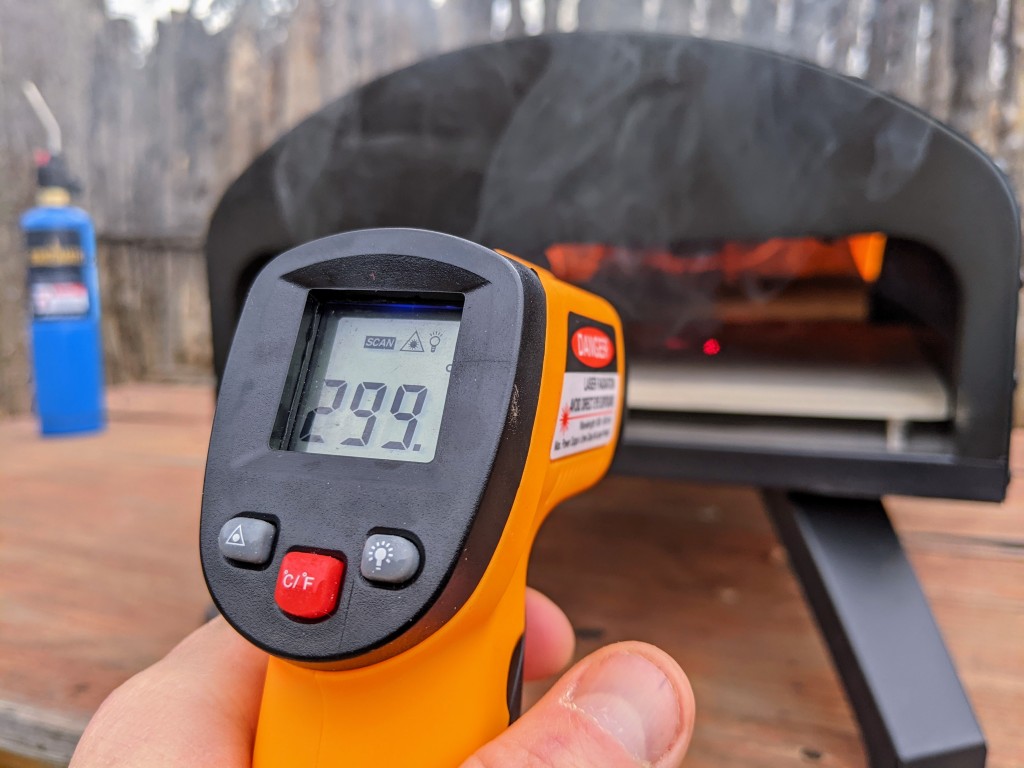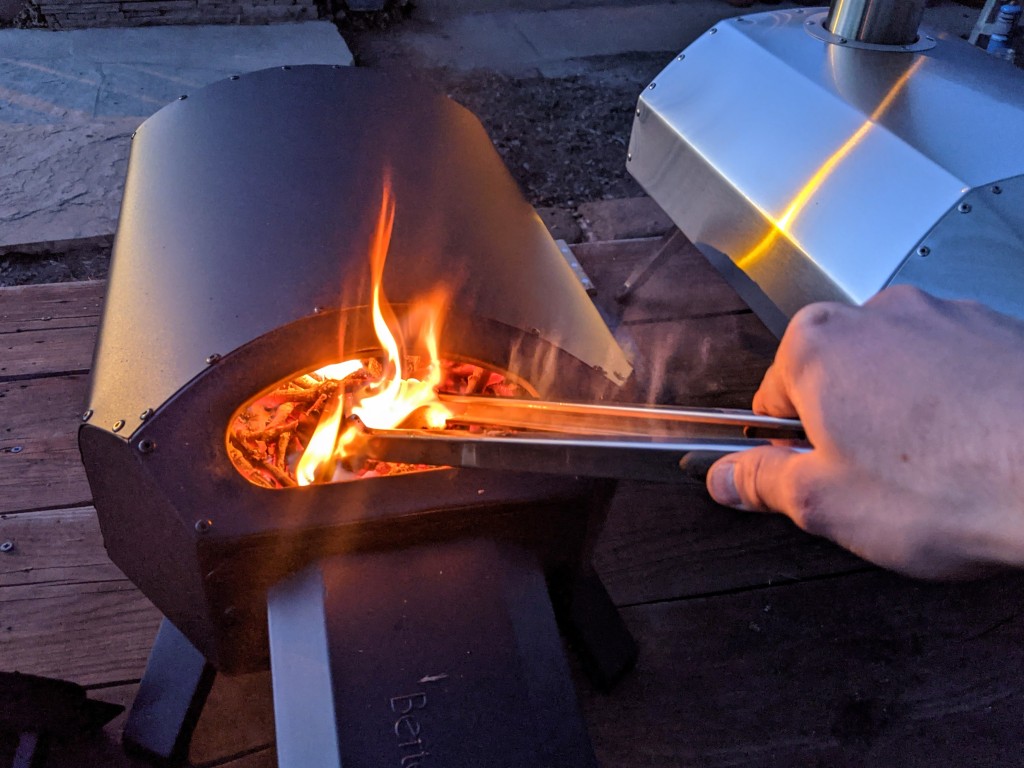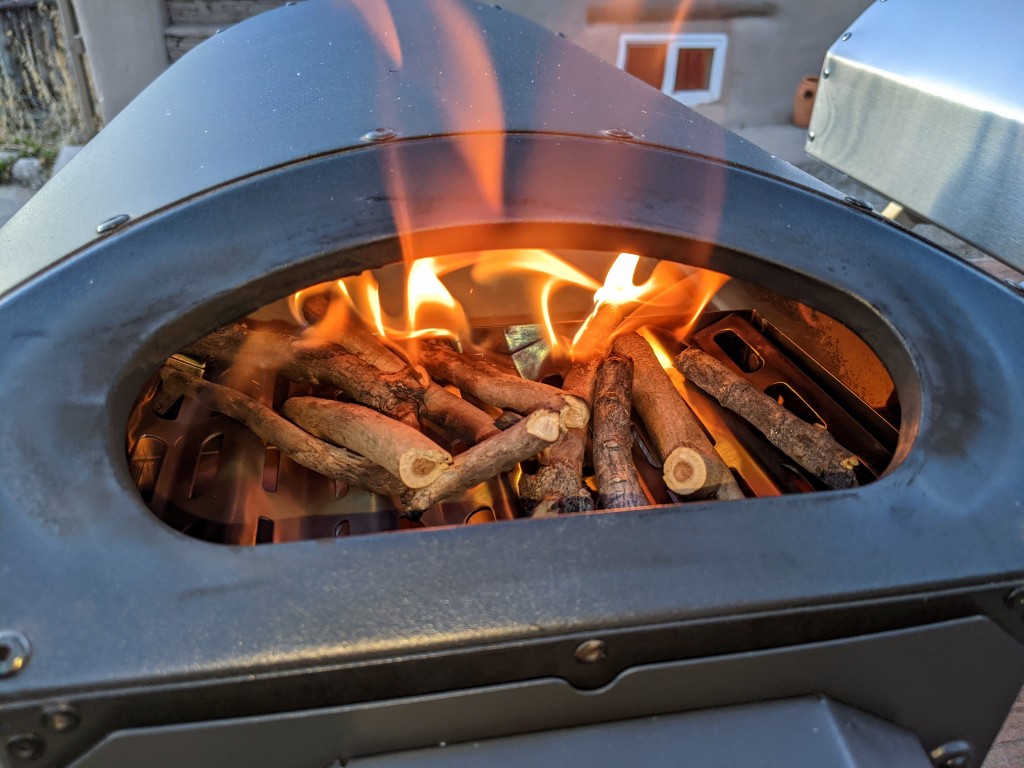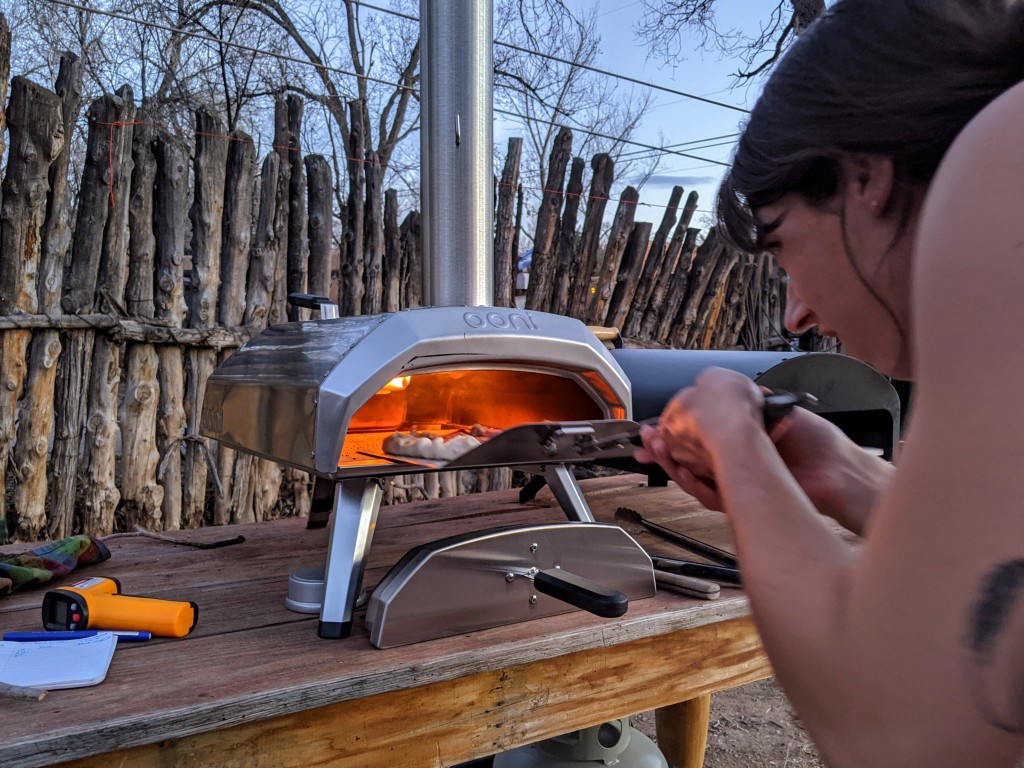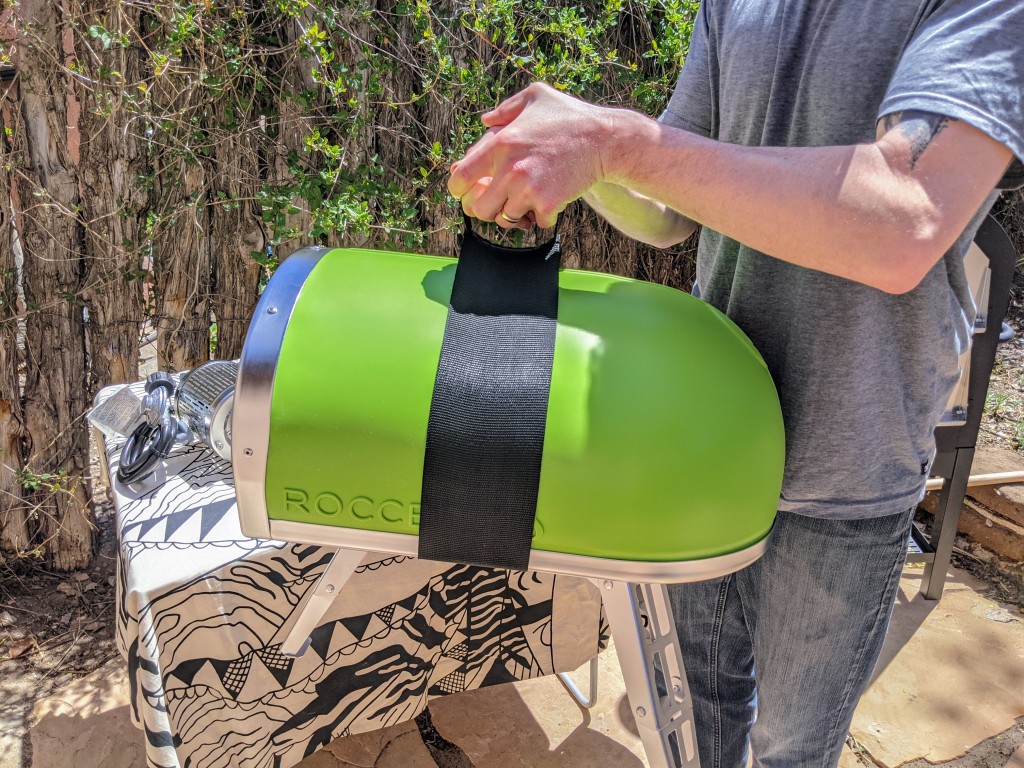As with all kitchen supplies, we decided on a set of comprehensive, yet mutually exclusive metrics before we began our testing process. Our aim is to better quantify the benchmarks of a truly great pizza oven. Side-by-side comparison gives us the ability to identify particular strengths and weaknesses of each of these ovens, relative to one another. Examining each model through this lens allows us to directly highlight nuanced differences that otherwise may not be apparent.
We performed some objective, "laboratory"-style tests and measurements — like using an infrared thermometer to find the average temperature of a pizza stone. But we also baked a lot of pizzas, so that we can provide you with subjective assessments based on our actual experience cooking with each of these ovens. It is this combination of impartial analysis with real-world application that allows us to draw honest conclusions to better inform your purchase decisions.
Cooking Performance
Using an infrared thermometer, we recorded both pizza stone and internal oven temperatures at regular intervals — we noted how long it takes to preheat the oven, and then how long it took to recover that ideal temperature in between loading pizzas. We marked down the average cook times of every pizza that came out of these ovens and made notes that correlate oven and stone temperatures to the quality of the crust.
We also took physical measurements of the size of the oven opening and the size and thickness of the pizza stone, both of which directly relate to heat retention, and thus the average cook time. We scrutinized the construction of these ovens and considered how particular design characteristics relate to insulation and heat retention. Finally, we took into consideration the differences between electric, gas- and wood-fired ovens, which we address relative to output power.
Output Power
One of the defining characteristics of Neapolitan-style pizza making is that they are cooked lightning-fast — traditional practice is 60-90 seconds. To do so, you must have an incredibly hot oven, capable of producing temperatures pushing 900°F. To get a gauge of output power, we allowed the ovens to preheat for 30 minutes, well past the common manufacturer recommendation of 15-20 minutes to ensure that we were indeed pushing maximum oven temperatures.
Internal Oven vs. Pizza Stone Temperatures
For gas ovens, we preheated with the burners open to the highest setting. For wood-fired ovens, we continually stoked them to keep the fire roaring. We're talking about incredibly hot temperatures inside these ovens, so it's not reasonable to use a standard oven thermometer, since they commonly only read up to 600°F. Instead, we estimated the maximum internal temperature by averaging infrared thermometer measurements from all four sidewalls and the pizza stone.
We used a similar approach to gauge the convective heat produced from the pizza stone. After allowing the oven to preheat for 30 minutes, we took measurements using an infrared thermometer from all four quadrants, plus the center, to gather an average temperature for the stone. During the cooking phase, we also measured the temperature of the pizza stone before loading each pizza, so that we could directly relate stone temperature and baking time. To bring this all back to the question of quality, we noted how well each crust baked to develop an understanding of optimum baking temperature for each oven.
During our testing period, we used the same recipe for making pizza crusts, and the same techniques for baking them in order to minimize any differences that may result from changes in preparation. This helped ensure that all of the differences in crust quality — how well it rose, the texture, and how evenly it cooked — were derived from the temperature and control of the oven itself, rather than from the chef.
Control
The question of how easy it is to control the cooking process really depends on the fuel source. For our review, we included both gas- and wood-fired outdoor ovens, as well as a few electric, indoor options. Some models in each category integrate a thermometer into the body of the oven — if they do, we made sure to test the accuracy of that thermometer with direct comparison to the average temperatures we calculate using an infrared thermometer.
Gas-Fired
The gas-powered ovens are easily the most convenient, and also consistently produce the highest heat out of the three options. As a result, it can take some spin-up time to learn how to operate these properly so that you produce beautiful pizzas instead of charred bricks. We considered the number, size, and shape of the burners, as well as their position and how they transfer heat to actually cook the pizzas. The burners all produce radiative heat, but for some, this is directed towards the bottom of the pizza stone to cook by conduction, while others use airflow to direct flames and convective heat over the ceiling of the oven. Don't tune out to this short lesson in thermodynamics — how heat is moved through the oven makes a huge difference in terms of how efficiently and effectively a pizza is cooked. For gas ovens, we also considered if there were clear adjustments in temperature settings, and how easy it was to work with these to achieve your desired results.
Wood-Fired
Though they are the most traditional approach, wood-fired ovens take the most amount of preparation for firing, as well as attention during cooking. The size of the firebox determines the amount of fuel one can add, and it is equally important to take into consideration how easy it is to load and maintain a consistent temperature during firing. Since they don't have easily adjustable burners to rely on, the oven temperature is based entirely on the size and temperature of the fire being tended. And as with all fires, the level of heat depends on airflow — we took special notice of how these ovens maintained airflow, and how it affected the way that the flames roll over into the baking area, thus affecting how evenly it bakes a pizza. Many of the wood-fired options we tested can also accept multiple forms of fuel (wood, pellets, and coal), and we gave extra points to those multi-fuel models that could also be converted to gas via an accessory option.
Electric
These are the only options in this review that don't fall into the category of Neapolitan-style ovens, and as a result, we treated them a bit differently. Since it is an electric element doing the cooking, often these ovens come preset for cooking pizza. While this is the ultimate convenience, it doesn't afford the same level of control as cooking with gas or wood — think electric hot plate versus a gas range stovetop. So we considered whether or not you can adjust the temperature, and if you need to adjust the baking time according to the style of pizza you want to make. We also examined how the design of the pizza pan or stone affected baking time and crust quality.
Ease of Use
A tool is only as good as it is useful. While specialty appliances will always be novel at first, it is their ease of use that often determines how often they get used over time. Aspects like user-friendliness, size, portability, and versatility can make the difference between one of these ovens earning their place as the highlight of your backyard or being forgotten about in the back of the shed.
User Friendliness
Our primary consideration was accessibility: can the oven easily be fired by your average at-home cook, or do you have to master the skills of a Pizzaiuolo before you can achieve quality results? It is also important to evaluate how convenient it is to use one of these ovens regularly. Is the oven easy enough to fire up for a weekly pizza night, or will it only be pulled out for special occasions? We also took into account whether it is reasonable to use by yourself, or if it requires multiple users to operate seamlessly. While gas options can preheat while prepping pizzas in the kitchen, wood-fired ovens require more attention — often it is easier to have one person dedicated to stoking the fire and baking, while the other is shaping and prepping pizzas. Last, but certainly not least, we took into consideration ease of cleaning.
Portability
Practically all of the models included in this review are considered portable ovens, but for some, this really isn't a reasonable consideration. We measured the footprint and assessed the stability of the legs on various surfaces. We also heavily factored in weight and bulk — while some are actually lightweight and incorporate features like foldable legs to improve portability, others weigh upwards of 50 pounds and are simply too cumbersome to reasonably take for a picnic.
Versatility
A pizza oven is a specialty item. But considering the price of these ovens, we also wanted to consider how versatile they are for other forms of cooking or baking. For example, many traditional ovens are used to bake both bread loaves and flatbreads. Though this is a relatively small part of our final scoring, we do take time to examine design points like oven chamber size and the ability for an oven to operate at lower temperatures. Recognizing the expense, we also take into account the appearance of the oven — as we said, these may well become the highlight of your outdoor kitchen.



